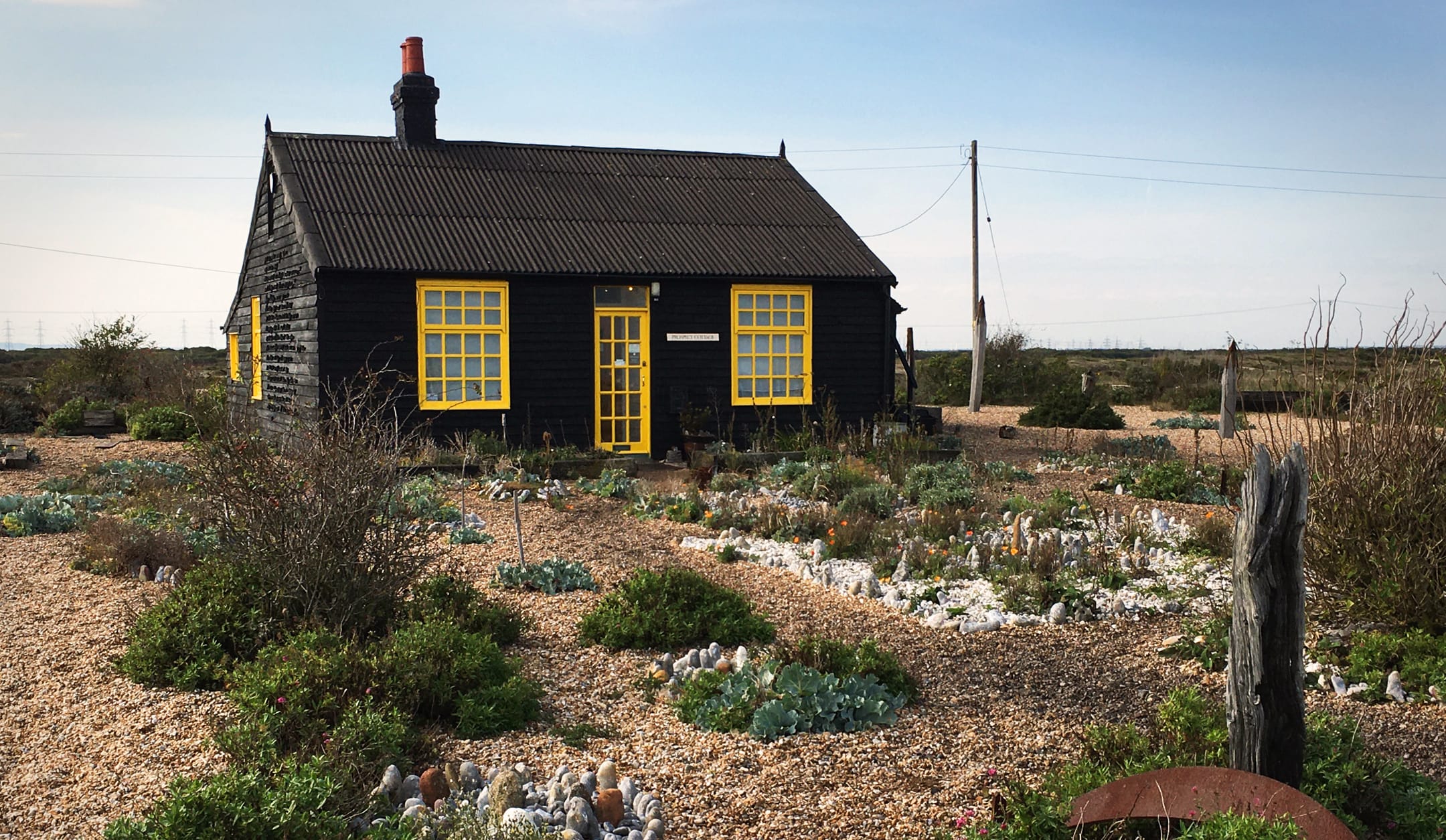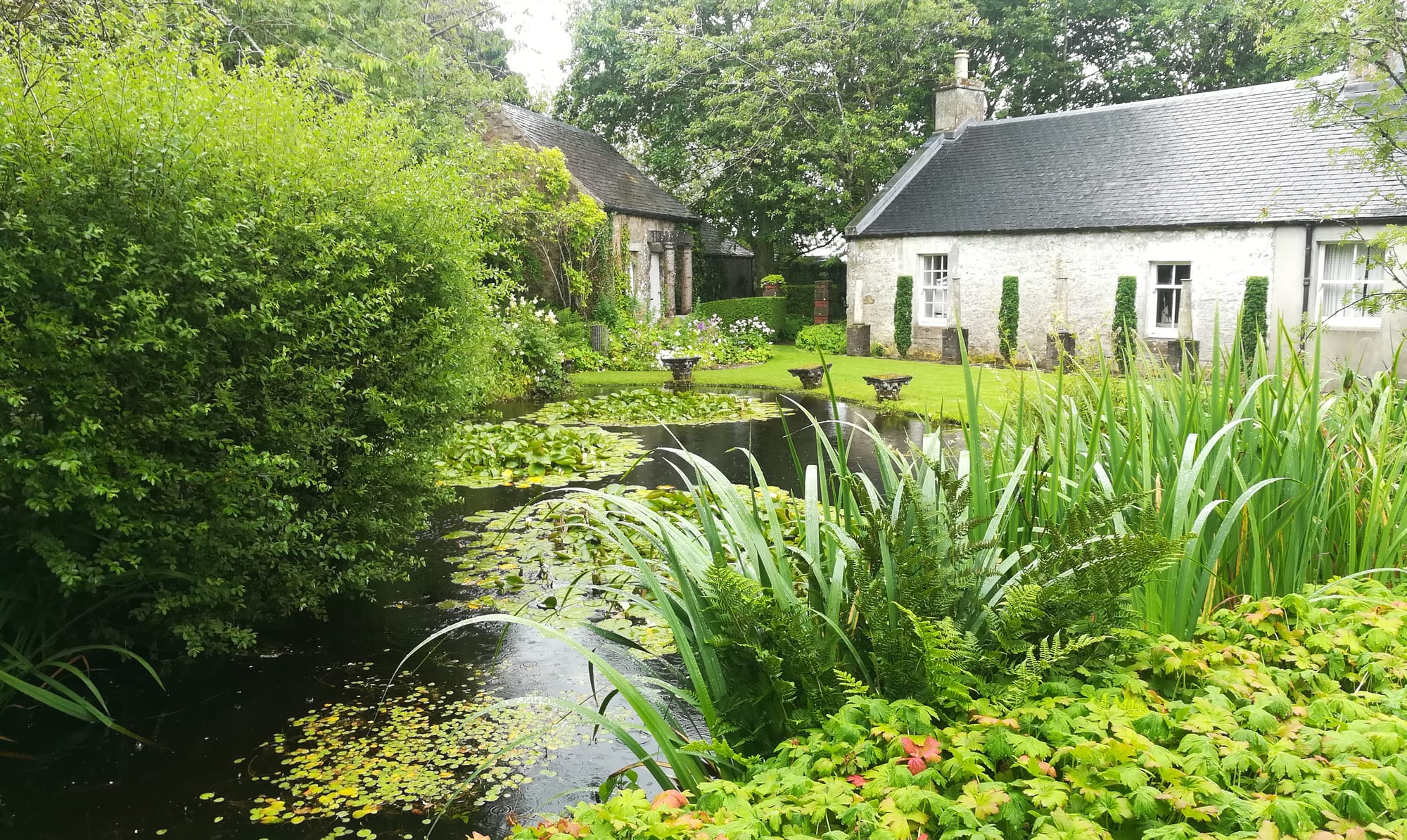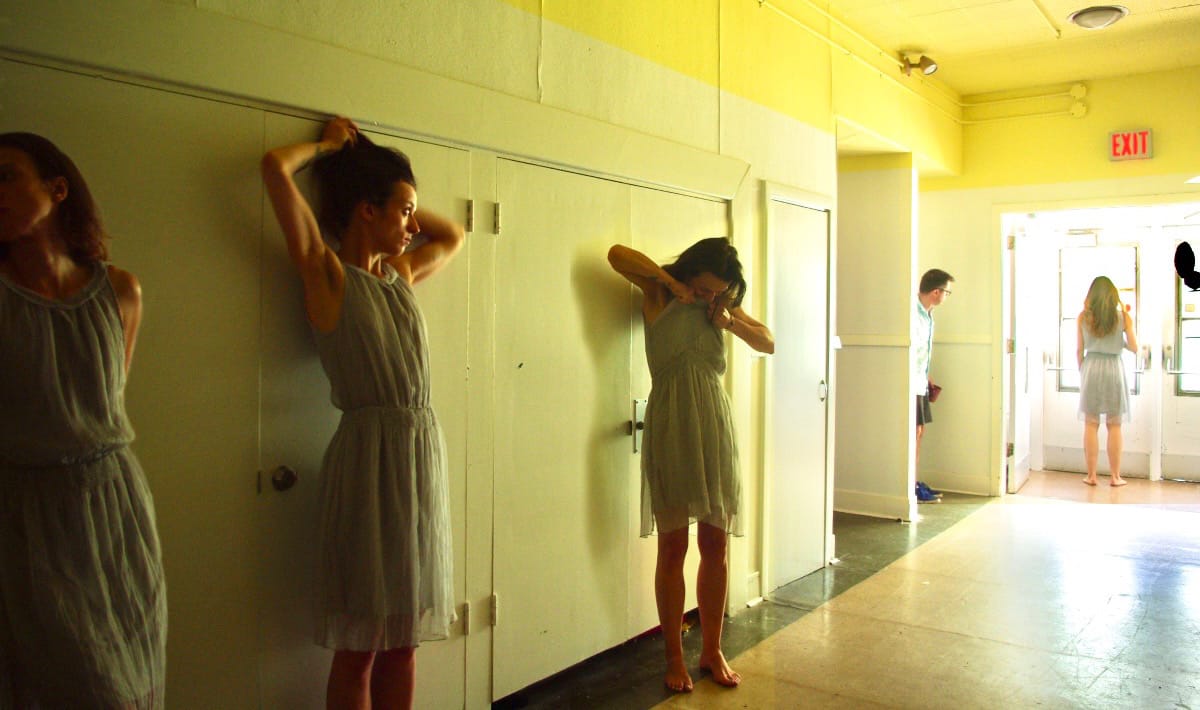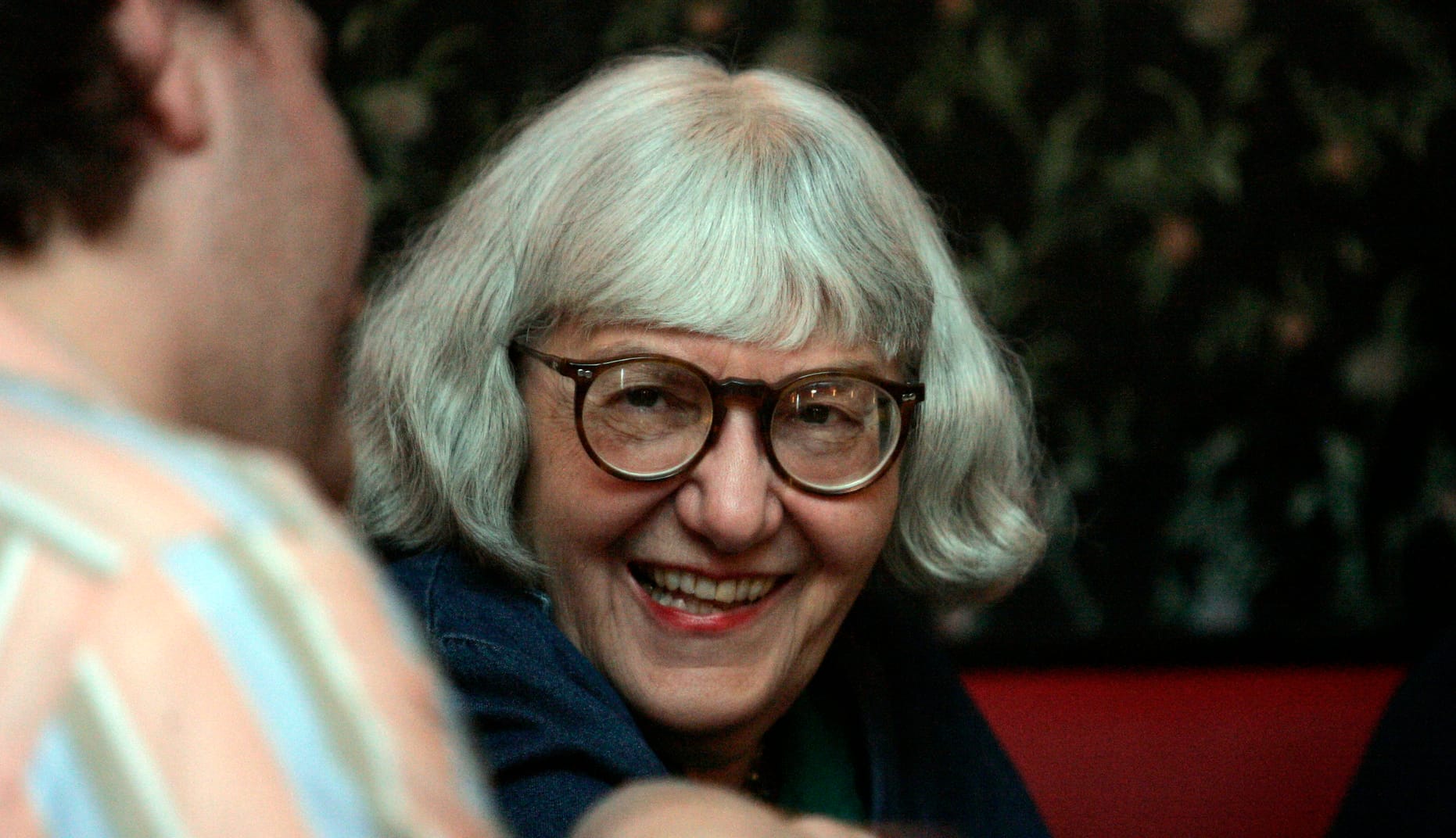Paradise and Ragwort: on Olivia Laing’s The Garden Against Time
The chaos and order of the garden has been a running theme through much of Olivia Laing's work, and her particular way of looking at the world. No matter how Edenic a garden, the outside world is always creeping in.

“Certain gardens are described as retreats, when they are really attacks,” the late, cantankerous Scottish gardener, poet, and sculptor Ian Hamilton Finlay once said in an interview. He was referring mostly to one of the great modern works of landscape art, his own Little Sparta. To tend to Little Sparta, as did Finlay and (honestly, mostly) his then wife Sue, you must care for the poems and the polemics alongside the creepers. Finlay’s battles with council over planning permission were as much a part of the artwork of the garden as the babbling brooks, the hedgerows, or the monuments to the destruction wrought by both Panzer tanks and the god Apollo. You cannot have beauty without confronting horror. You must tend to your memory of both.
Finlay’s aphorism makes an inevitable appearance in Olivia Laing’s new book The Garden Against Time, the story of a year in which she journeys through the vastness of the question of what it is to bring a garden under one’s control. It’s a quest tied to her efforts to tame her own new garden—a classic fixer-upper on the Suffolk coast, in as much need of fresh love as many of England’s old ideas.
To this point, Laing has not lived a life filled with the privilege of walled gardens. She’s moved to Suffolk during Covid with her older partner Ian, and though it’s only a humble third of an acre, it’s the first garden she has ever had complete ownership and access to. This newfound privilege, and all its verdant potential during a dire pandemic, is hardly lost on Laing, but the chaos and order of the garden has always been at the heart of her very particular way of looking. The Garden Against Time sets down the ledger of why.
“Plants were always spilling from the centre of any utopia I imagined,” she writes amidst a reflection of her own life of moving through collectivist social struggles. In her twenties, she trained to be a herbalist—“my head was full of plants, an entanglement of natural forms. The study of botany was an education in looking. It made the ordinary world more intricate and finely detailed, as if I had acquired a magnifying glass that trebled the eye’s capacity. Each plant was so interwoven into human history that to study it was to tumble down a conduit through time.”
Perhaps no presence looms larger over The Garden Against Time than the late Derek Jarman’s. His diaristic Modern Nature, Laing writes, was the early gateway to her own botanical studies, and to many of the readings and references that appear throughout this book. With her hands back in the soil, Jarman’s “sentences came seeping up like groundwater.” She’s on her twentieth or so reading of the book now, and still its meanings open up for her anew. It was Jarman’s famously windswept garden outside his cottage in Dungeness in the southeast of England, and how he put it to work as an act of both survival and defiance, that led Laing to believe that a garden dies with its owner. It can be preserved, as she herself had been involved with preserving his, “it can be re-animated in a new form, absolutely,” but without Jarman’s “reckless aliveness” and “restless motion,” it was only a shell.
The Garden Against Time brings together many of Laing’s enduring preoccupations—from that sense of human hurt that lurks beneath the surfaces of our natural world, so much at the heart of To The River, in which Laing walked the length of the river that Virginia Woolf drowned herself in, to her explorations of solitude and its value in The Lonely City. Any garden you are lucky to be able to hold stewardship over for a moment is a place for solitude but also, as Laing repeatedly finds over the course of this book, a place for community and connection. A place where you hold responsibilities that might be considered timeless.
If every plant is a conduit, every garden is a meandering river through time, cutting its way as it must through history and human folly. But to think of them as retreats is to miss the point, as Finlay might bark at you. Everything In the garden is outside of it. “While the spell of the garden does lie in its suspension, its seeming separation, from the larger world,” Laing writes, “the idea that it exists outside of history or politics is not a possibility.”
Every day, she sets to work on her garden after breakfast—“I went to wherever caught my eye, and worked over it, just as an editor rakes over a text, looking for what doesn’t belong; what impedes the view or breaks the flow.” And then inside, to read more books on gardening; she too has arrived at that inevitable place in a writer’s career where you start writing about gardens. Throughout Garden Against Time, Laing weaves in earthbound moments from the lives of many storied Englishfolk whose lives and legacies are bound up in ideas about paradise and utopia, but the character she sets out to understand the most is the late gardener of minor note, Mark Rumary. It was Rumary who last worked Laing’s newly acquired garden, and it’s as though he’s speaking directly to her every time a new surprise emerges out of the ground.

Through conversations with those who knew him a little—the executor of his will, who laments how difficult it would have been for somebody like Rumary to be gay, here, in his time—and his partner (or “friend” to the end), she also moves through the stories of many great gardens of the region, and the gardens and gardeners who defined centuries of the English garden aesthetic. Along the way she stops to document the acts of quiet, radical queerness and collectivism that are sitting right there in the archives if you know how to look, but also the legacies of Rumary’s forebears, the likes of Capability Brown and his Capability Men, who “dammed rivers to make new lakes, drained marshes to produce rolling lawns, slashed sight lines through woods,” and so on. And, of course, “human beings were regarded as just as movable as trees.” Why let a hamlet or the people in it get in the way of a perfectly good view?
For Laing, gardens can be both “dreamworks, the result of intensely personal creative labour”, but also brutal status symbols, “a way for money to announce its presence in a more comely or displaced form.” When you dare to ask that most un-English of questions of a very English garden, “where does the money come from?”, that tumble takes you straight through the costs and horrors of empire. In another storied garden the book explores, Iris Origo’s Val D’Orcia, an Italian nexus of both horror and respite during the end days of World War II, a commitment to beauty and care does not provide an inevitable place for peace afterwards. Of the good-hearted Origo’s failure to connect with her working class neighbours, as lives were rebuilt after the horror, Laing writes, “she could not understand that there might be something systemically, even fundamentally, wrong with one person owning land on which many other people depended for their lives, no matter how kind or well-intentioned they might be.”
One of Rumary’s projects she finds oddly familiar on her first encounter is his restoration of nearby Ditchingham Hall following the great English hurricane of 1987. The reason it feels so known is that it was the last point of call on WG Sebald’s long walk along the Suffolk Coast in The Rings of Saturn—a walk, she realizes, which would have taken Sebald, or the narrator of his masterwork at least, past her front door. The Rings of Saturn is, she writes, a book of images of “destruction on a near-inconceivable scale,” a charred earth at the centre of which lies the Holocaust. “In Sebald’s vision the world is and always has been a charnel ground, in which success is at once contingent upon plunder and predation, and doomed to ruin, since the universe will not support perpetual harvest but must pass through cycles of war and famine too.” The landscape Sebald walked through was still bearing the damage of the hurricane, fifteen million dead trees on the floor of this ruined universe, “as if they had fallen into a swoon.”
As on Sebald’s long walk, the horror isn’t buried very deep—stir up the topsoil just a little, and it's always there. Not so much dormant as waiting. A good portion of the book is spent looking for origins of such sentiments in the early seventeenth century, at the moment John Milton was writing Paradise Lost while coming to terms with the radically transformed reality around him. It was at this time that the words “planter” and “plantation” took on their more sinister meanings—“a plantation might contain gooseberries and raspberries grown from suckers or cuttings, but then again it might be people, suckering from the homeland and re-establishing overseas, in someone else’s home.” Colonialism was an Edenic project, a conquest for a paradise of new resources.
Milton’s great work is a product of both this time and his place in it—the period in British history known as the Interregnum, following the execution of Charles I in 1649, during which Milton served as the Secretary for Foreign Tongues under Oliver Cromwell’s commonwealth, and while the Levellers and the Diggers and others fought for the possibilities and soul of what a new England could be. Following the restoration of the monarchy, Milton, as a Cromwell collaborator, feared for his life. Laing observes just how much the traces of the colonial expansionism that followed can be found strewn throughout Paradise Lost, “like items washed ashore after a shipwreck.”
The garden was the first promise. The one we were all born into, and the one we’re all destined to have broken for us, each in our own way. “Nearly all of us have lost or relinquished or else forgotten the paradise of a child’s perception, when the world is so new and generous in its astonishments,” Laing writes. She’s writing after Jarman, of course, who wrote that “Paradise haunts gardens,” realizing in their Persian etymology the two words kind of mean the same thing. It was the promise of a paradise we were born into. But as Laing points out, the etymology is more specific. Paradise isn’t just a “green place” as Derek Jarman had it, but a walled garden.
“A garden dies with its owner,” she writes, after realizing upon returning to Jarman’s garden a few years ago how empty it felt without the man himself. This is a nice soundbite, but also it struck me as at odds with both the glorious muck I now find under my own fingernails, and what would seem to be the book’s main argument.
In our part-time home here on the Newfoundland coast—in a village settled in the 1600s as a home for bonded seasonal labourers, referred to in the historical documents of the time as one of the earliest colonial plantations—my partner and I have spent the last couple of years bringing my mother’s garden back to life after five years of neglect. We’ve been hauling out the weeds that grew in as grief and trauma distracted all of us, and clearing space around the more delicate flowers penned in by wild roses. As we dig and cull, turning up old bulbs and surprising new flowers amidst the thickets of thorny wild roses, we try as best we can to understand the intentions behind the beautiful things she planted here—what possessed her to bring such fragile creatures to this harsh Atlantic coast? How is it that they seemed to thrive for her, when all the land seems to want is something much more tangled and chaotic, and when I’ve watched the ocean itself almost rise to the bed?
So much of my care involves brute force removal. Raking up the kelp washed ashore at high tide alongside the lawn clippings. Next door, in another garden we now tend, my late uncle’s vegetable patch lies dormant in an upturned truck bed cover, and goutweed threatens to burst forward across all of it. Elderly neighbours, even the mail delivery person, share fragments of what they remember of my uncle’s garden, what colours came at what time of Newfoundland’s short growing season. A distant relative asks if they’re still the same roses my great-grandmother planted, as I tear through their thorny tangles. Each season, new parts of the story reveal themselves. Our garden here, as the harsh winter clears and the whales migrate back to just outside the harbour, brings forth surprises again. New and generous in its astonishments. As old as the earth. The fiddleheads are done. In a few months, there will be blueberries. Just as there have always been.
Just as Laing realizes when she and Ian are finally able to share their garden with others during a grand and festive party, a moment of cathartic happiness for her, we find pride not just in keeping the story of my mother’s garden alive but in showing it to others. As new life bursts through the garden, we add our own marks to an earlier story. It’s not the same garden, but it has the same roots.
After the Great Fire of London, Laing writes, the city’s streets were newly verdant with flowering weeds. So, too, after the Blitz, when the bombed-out shell of the city became mantled in rosebay willowherb, Atlas poppy, fleabane, and ragwort. Even tomato plants sprung up in sunny corners, possibly from seeds spilled from office workers’ lunches. In a painting depicting one of these scenes of regeneration, apocalyptic destruction all around, she notes the presence of curly dock, chickweed, and dandelion. “Medieval plants for the medieval merchants who’d once had their gardens here, returning to take up their long-accustomed stations.”
Here, the house is still crumbling, but the garden, it’s coming back. It shows promise.





